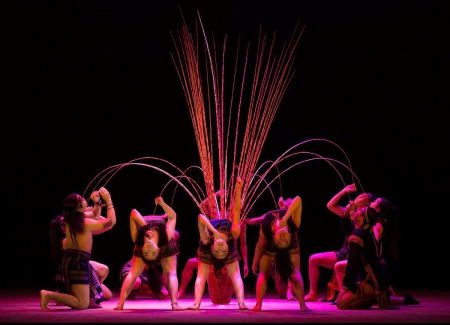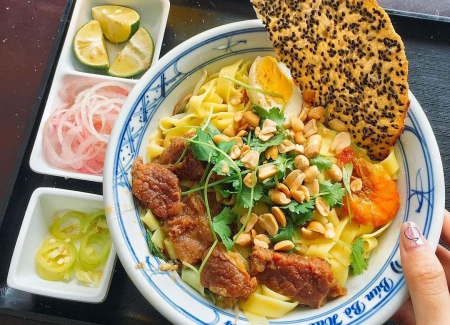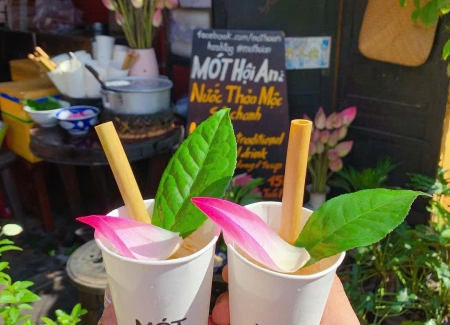Top 5 Must-Try Dishes When Visiting Hoi An (Part 2)
Hoi An's cuisine is a vibrant canvas that reflects the historical flow through each flavor. As a bustling trading port since the 16th century, Hoi An has embraced influences from various cultures, including Chinese, Japanese, and Western, to create unique dishes with a deep historical imprint. Each dish here is like a story about cultural convergence-where Eastern spices blend harmoniously with Western cooking styles. Despite many influences, Hoi An cuisine maintains the simplicity and authenticity of the Vietnamese people, highlighting the perfect balance between tradition and creativity. When enjoying a dish in the ancient town, you not only savor the rich flavors but also feel the echoes of the past, when Hoi An was a crossroads for many civilizations around the world.
Top 5 Must-Try Dishes When Visiting Hoi An (Part 2)
Hoi An's cuisine is a vibrant canvas that reflects the historical flow through each flavor. As a bustling trading port since the 16th century, Hoi An has embraced influences from various cultures, including Chinese, Japanese, and Western, to create unique dishes with a deep historical imprint.
Each dish here is like a story about cultural convergence-where Eastern spices blend harmoniously with Western cooking styles. Despite many influences, Hoi An cuisine maintains the simplicity and authenticity of the Vietnamese people, highlighting the perfect balance between tradition and creativity. When enjoying a dish in the ancient town, you not only savor the rich flavors but also feel the echoes of the past, when Hoi An was a crossroads for many civilizations around the world.
- White Rose Dumplings (Bánh Vạc)
Hoi An cuisine is renowned for its traditional dishes like wontons, dumplings, and white rose dumplings. The dumpling shells are soft and pliable, made from pure rice flour. White rose dumplings are filled with finely ground shrimp mixed with secret spices, while dumplings are stuffed with fragrant stir-fried pork and wood ear mushrooms. Both are steamed and served with sweet and sour fish sauce. Wontons, influenced by Chinese cuisine, have been uniquely adapted in Hoi An with fresh shrimp or meat fillings and are either fried or served in soup. These simple yet sophisticated dishes leave a lasting impression on anyone who tries them.
- White Rose Restaurant: 533 Hai Ba Trung, Hoi An.
- Rice Cake (Bánh Bèo)
Hoi An's Rice Cake is a humble dish known for its distinct flavor, representing the Quang region's culinary identity. Unlike rice cakes elsewhere, those in Hoi An are served on a tray with 6–10 petite bowls, each containing a soft, milky-white cake topped with savory shrimp and pork filling. The highlight lies in the dipping sauce - a carefully crafted blend of fish sauce, sugar, vinegar, garlic, and chili - that offers a balanced taste, neither overly salty nor bland, with a subtle sweetness. The combination of the smooth cake, flavorful topping, and fragrant sauce creates an unforgettable dining experience in the ancient town.
- Ba Bay Rice Cake: 2 Hoang Van Thu, Hoi An.
- Crushed Rice Paper, Stir-Fried Baby Clams (Bánh Đập, Hến Xào)
“Banh Dap, Hen Xao” is a quintessential dish of Hoi An, blending crispy grilled rice paper with soft steamed rice paper, lightly "crushed" to mix textures. The highlight is the stir-fried clams from Cam Nam village, renowned for their sweet and savory flavor derived from brackish water. The clams are stir-fried to perfection and served alongside the crushed rice paper with a dipping sauce made of fish sauce, garlic, chili, sugar, and lime, creating a harmonious blend of sweet and sour. Each preparation step, from making the rice paper and stir-frying the clams to crafting the sauce, showcases the locals’ skill and dedication. This simple yet flavorful dish leaves a lasting impression on visitors.
- Cam Nam Crushed Rice Paper: 679/2 Hai Ba Trung, Hoi An.
- Mango Cake (Bánh Xoài)
Mango Cake from Hoi An, with its petite shape resembling a tiny mango, is a signature snack of the ancient town. Although its name suggests a connection to mangoes, the cake is made from a soft, fragrant glutinous rice shell that envelops a sweet and nutty peanut filling. One bite reveals a delightful sweetness, evoking memories of childhood. This cake is more than just a treat; it’s a cultural symbol of Hoi An’s culinary tradition, reflecting the rustic yet refined character of this historic land.
- Cau Go Mango Cake: Near the Japanese Bridge, Hoi An.
- Mot's Traditional Herbal Drink (Nước Mót)
It’s easy to spot visitors in Hoi An holding a rustic Mot drink, served in a white paper cup with a bamboo straw and a fresh tea leaf garnish. This simple beverage is made from herbal ingredients like lemongrass, monk fruit, licorice, chrysanthemum, and honey, offering a refreshing and gentle taste. A sip of Mot not only quenches thirst but also provides a sense of relaxation, as if blending into the peaceful atmosphere of the ancient town. Its subtlety and uniqueness have made Mot an iconic Hoi An drink, leaving a lasting impression on every visitor.
- Mot: 150 Tran Phu, Hoi An.
If you love this article and wish to experience the wonders of Hoi An and Da Nang, “book your tour today- no prepayment required” !





